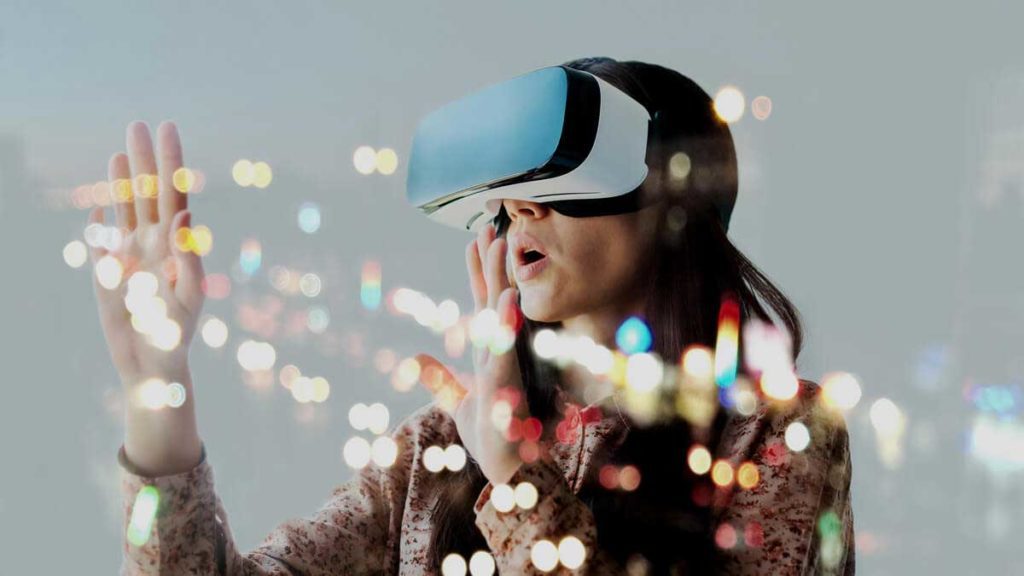
While technology has enhanced our lives in many ways and offered solutions, too much of anything, has its own set of repercussions.
Prior research has indicated that being overly connected can cause psychological issues, from distraction, narcissism, expectation of instant gratification, and depression. Besides affecting user’s mental health, intense use of technology (and physical inactivity) can increase the number of health risks including, vision impairment, hearing loss, deep vein thrombosis, headaches, and neck strain.
VR is a simulated experience that can be similar to or completely different from the real world. Virtual reality technology has been utilized in many fields including entertainment, education and medicine.
How is VR achieved? Our senses are stimulated together in order to create the illusion of reality, using headsets, omni-directional treadmills and special gloves.
Most VR headsets contain two small LCD monitors, each projected at one eye, creating a stereoscopic effect that gives users the illusion of depth. These monitors are placed very close to the eyes which has raised concern from professionals about the negative effects after being used for prolonged periods of time.
When using the feature, the person’s brain is forced to process visual stimuli in a different way than normal. Here, the brain faces its normal functioning to understand what the new feature is telling it, causing people to get headaches and eyestrain.
Thus, eyestrain is a sign that the eyes are tired from intense activity, which is why many experts recommend taking frequent breaks and not using VR headsets for too long.
In addition, more than 70 percent of people complain of nausea and dizziness when using virtual reality headsets, according to ABC news.
‘Cybersickness,’ a form of motion sickness associated with VR headsets, is also known to occur when there is a mismatch of visual information and body position.
A software developer, Danny Bittman has tweeted about how putting on a VR headset for several hours a day has harmed his eyesight. He took to Twitter to explain.
“Just had my 1st eye doctor visit in 3 years. Now I’m very worried about my future VR use. I have a new eye convergence problem that acts like dyslexia. The doc, a headset owner, is convinced my VR use caused this.” Bittman goes on to mention the doctor’s comment about his eyesight. “These eyeglasses we usually prescribe to 40-year-olds”
Despite the rising number of concerns, the Association of Optometrists have found no evidence that proves VR headsets could bring about long-term eye damage.
Ways to prevent VR eyestrain?
- While using the headset, make sure to consciously blink.
- Adjust the display settings so the projected images are not too sharp or too bright.
- Take frequent breaks and limit usage time.
- Take off the headset regularly, at frequent intervals.
- Use artificial/natural tears and massage the eyes and temples after removing headsets.
- A person should stand up, walk, stretch and take deep breaths when removing headset.
On a good note, VR headsets have been adapted to help improve eyesight. Start-up company GiveVision created a wearable device called SightPlus that aims to restore vision to people whose eyesight has deteriorated beyond repair, by projecting a video of the real world into the working part of the retina.